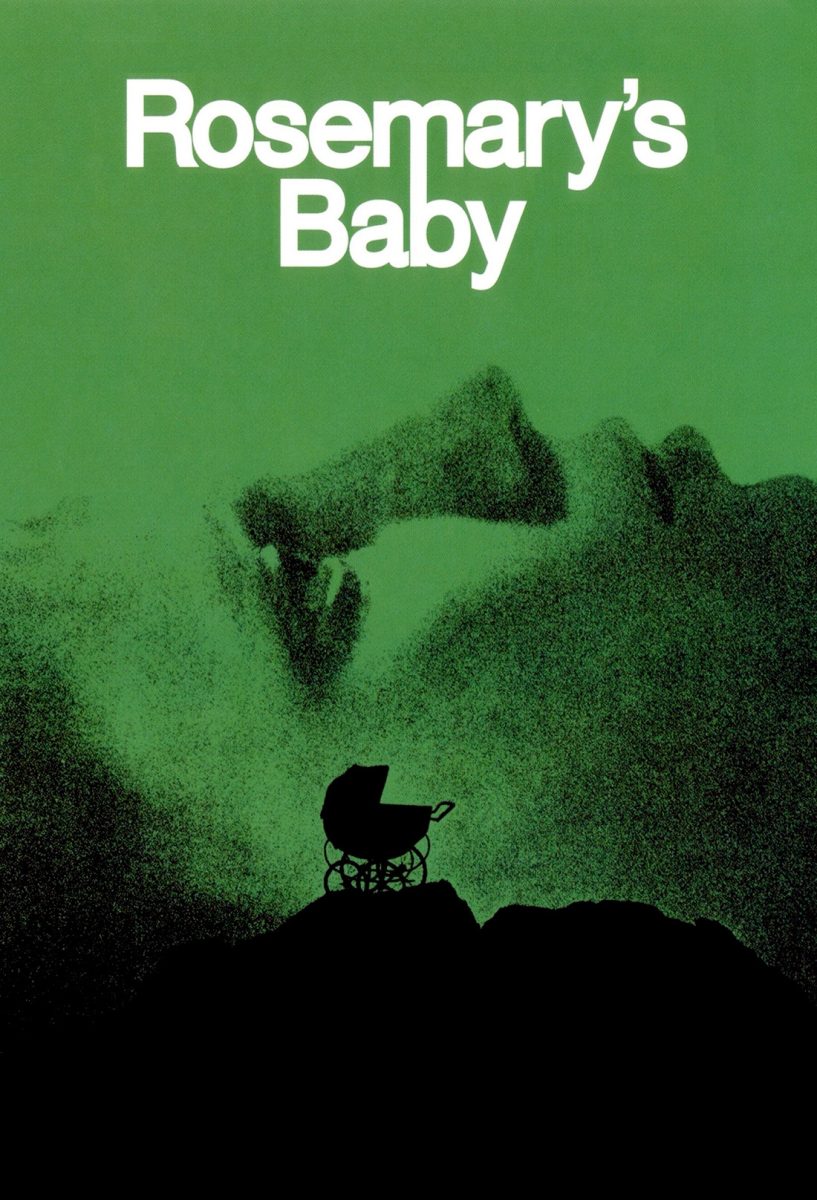For the past three years, my mom has been begging me to watch Roman Polanski’s 1968 horror classic “Rosemary’s Baby.” In preparation for Halloween next week, I finally got around to watching the film.
“Rosemary’s Baby” is a horror movie for the ages, perfectly blending psychological tension with supernatural dread to create an atmosphere of paranoia and existential terror.
Adapted from Ira Levin’s novel of the same name, the film follows Rosemary (Mia Farrow) and Guy Woodhouse (John Cassavetes), a newly married couple who move into a New York City apartment building with a strange past and even stranger tenants. The film also stars Ruth Gordon and Sidney Blackmer as the Castevets, friendly neighbors of the Woodhouses.
Roman Polanski is a very well-known filmmaker for both good and bad reasons. Throughout his career, Polanski made many groundbreaking films, such as “Chinatown” (1974) and “The Pianist” (2002), the latter gaining him an Academy Award for Best Director in 2003. “Rosemary’s Baby” stands shoulder to shoulder with Polanski’s other works. Polanski meticulously directs each scene, knowing when and how to move and use the camera to heighten the storytelling.
Polanski and cinematographer William A. Fraker adeptly use the apartment and other domestic spaces in the film to add to Rosemary’s sense of isolation and entrapment. In addition, the film subtly yet impactfully explores the themes of bodily autonomy, a theme ever more relevant today than it was in 1968. It also looks at the horrors of domesticity.
Polanski does a great job of keeping the audience engaged and constantly guessing what will happen next. The ambiguity that Polanski maintains until the final act also leaves the audience grappling with questions about faith, trust and power — ideas that resonate beyond the supernatural horror and into our everyday lives.
Farrow gives a powerhouse performance as Rosemary Woodhouse, transforming into a paranoid and endearing woman who aspires to be a mother above all else. Farrow’s portrayal of a woman increasingly alienated from her body and mind is hauntingly compelling, giving the film emotional weight beyond its horror premise. She was by far my favorite aspect of the film, and I am now eager to dive deeper into her filmography.
Cassavetes, whom I know as a well-respected director of films like “A Women Under the Influence” (1974), brilliantly plays Guy, a man driven so heavily by success that he’ll sacrifice whatever it takes to get to the top. Gordon is also exceptional as the “friendly” neighbor with darker intentions than they let on. She eats up every scene she’s in.
Technically, “Rosemary’s Baby” doesn’t break new ground with how it uses color and moves the camera. Still, cinematographer Faker and production designer Richard Sylbert put a large amount of detail and life into each set, especially the Woodhouse’s apartment, reflecting Rosemary’s declining mental state as the film goes on through the set and costumes by Anthea Sylbert. Christopher Komeda’s score is haunting and utterly alluring, while the editing by Sam O’Steen and Bob Wyman is brisk and unnoticeable, which is always a good thing.
Overall, “Rosemary’s Baby” is a revolutionary horror film that offers a sophisticated and disturbing meditation on fear, control and societal constraints.
Rating: ★★★★✯























































































































